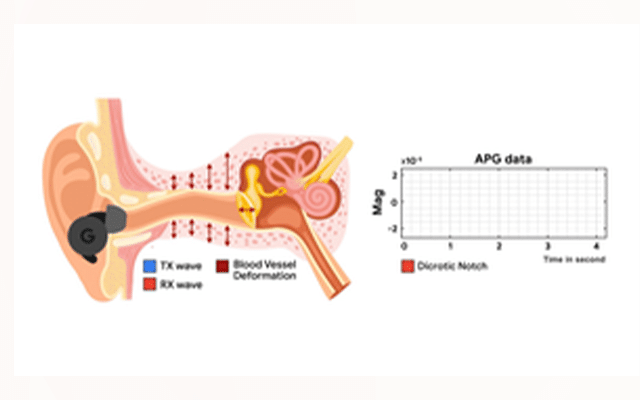San Francisco: Google scientists have successfully used audioplethysmography (APG), that utilises ultrasound to measure heart rate, for cardiac monitoring with hearable devices without adding extra sensors or compromising battery life.
The team conducted two rounds of user experience studies with 153 participants.
The results demonstrate that APG achieves consistently accurate heart rate (3.21 per cent median error across participants in all activity scenarios) and heart rate variability (2.70 per cent median error in inter-beat interval) measurements.
People frequently wear headphones and earbuds not just for music listening, but also for exercising, focusing, or simply mood adjustment.
“We have introduced a novel active in-ear health sensing modality. APG enables ANC hearables to monitor a user’s physiological signals, such as heart rate and heart rate variability, without adding extra sensors or compromising battery life,” Google researchers said in a blog post.
APG adheres to safety regulations with an 80 dB margin below the limit, remains unaffected by seal conditions, and is inclusive of all skin tones.
The signal quality of passive listening in the ear canal heavily relies on the earbud seal conditions.
It is challenging to embed health features that rely on the passive listening of low frequency signals on commercial ANC headphones.
“APG bypasses the aforementioned ANC headphone hardware constraints by sending a low intensity ultrasound probing signal through an ANC headphone’s speakers,” said Xiaoran “Van” Fan, Experimental Scientist and Trausti Thormundsson, Director, Google.
This signal triggers echoes, which are received via on-board feedback microphones. We observe that the tiny ear canal skin displacement and heartbeat vibrations modulate these ultrasound echoes.
“The final APG waveform looks strikingly similar to a photoplethysmograms (PPG) waveform, but provides an improved view of cardiac activities with more pronounced dicrotic notches (pressure waveforms that provide rich insights about the central artery system, such as blood pressure),” they explained.
During their initial experiments, they observed that APG works robustly with bad earbuds seals and with music playing.
“However, we noticed the APG signal can sometimes be very noisy and could be heavily disturbed by body motion. At that point, we determined that in order to make APG useful, we had to make it more robust to compete with more than 80 years of PPG development,” said the team.
APG transforms any TWS ANC headphones into smart sensing headphones with a simple software upgrade, and works robustly across various user activities, the researchers added.

















